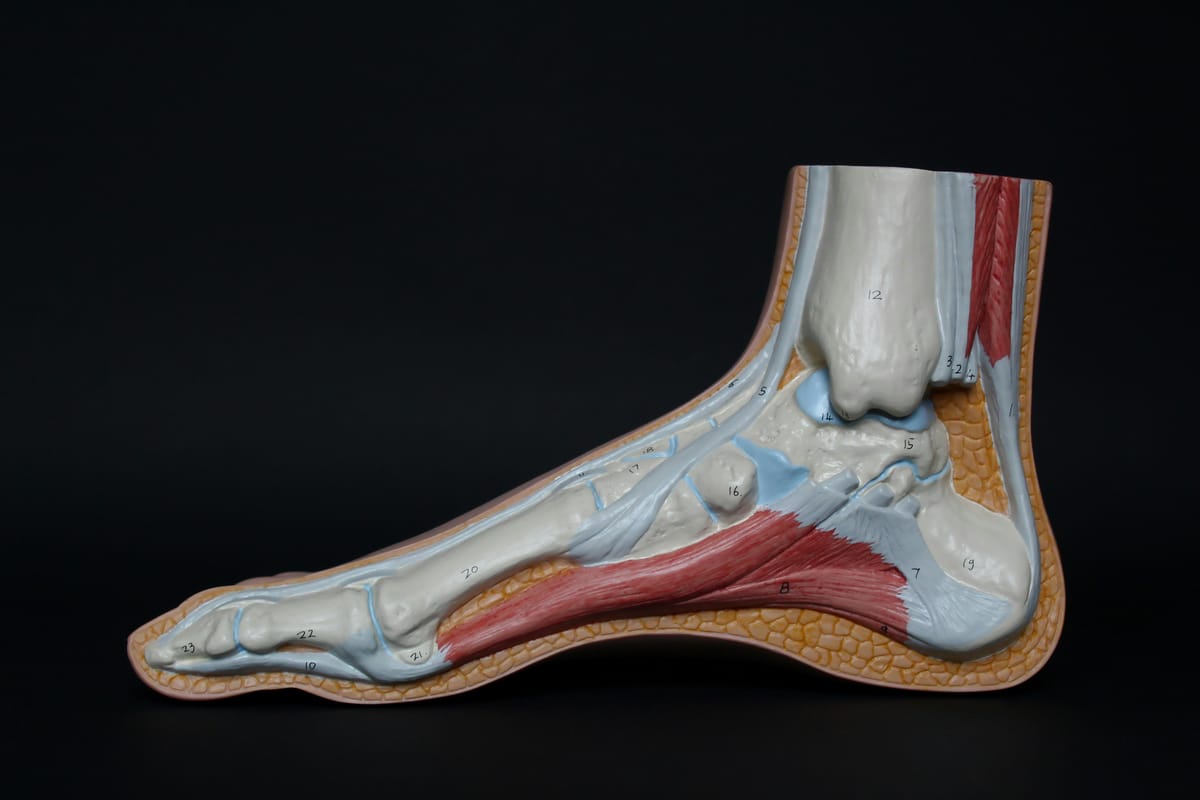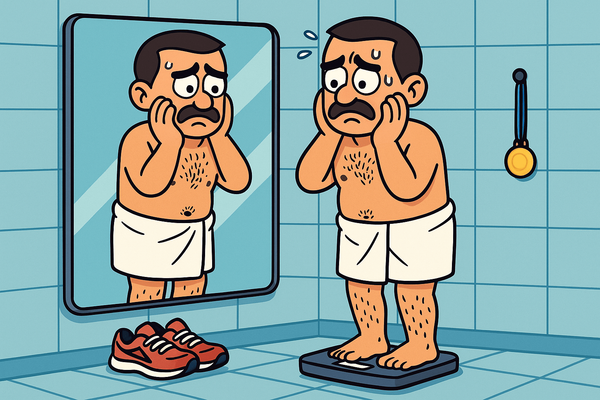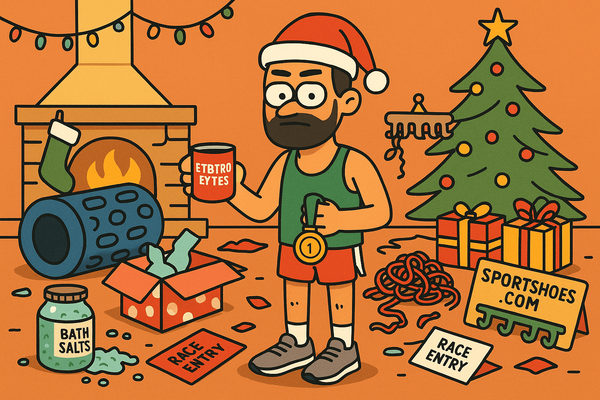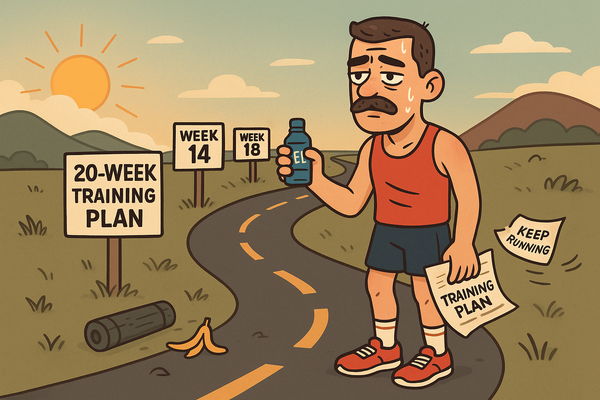Running with plantar fasciitis: all the pain and limited gain
Training for a marathon with plantar fasciitis? Here’s how I’m managing the pain, from taping tricks to the one reason I keep a crutch by my bed.

Running with plantar fasciitis is one of the most agonising experiences in marathon training. If you’ve never had plantar fasciitis, congratulations. You’re missing out on one of the most agonising running injuries known to humankind.
Marathon training doesn’t pause just because your foot is staging a rebellion - my plantar fasciitis kicked in just in time for the start of my 20 week marathon training plan. Here’s how I’m managing my mileage without completely destroying my plantar fascia - or my will to live.
Quick tips:
- Strength training and stretch: make sure you work key muscles like your calves daily and include a weekly leg session with heavier lifts.
- Tape after runs: If the pain gets unbearable post run, try taping your foot.
- Keep a crutch by the bed: sure it’ll make you feel like you're 103 years old, but you’ll thank me in the morning when you're in agony and desperate for the toilet.
Plantar fasciitis pain relief for runners
Get a physio
Sure, you can try to Google your way out of it, or guess your way to the cause of your problems, but an actual human who can look at your gait, your training load, and your pain patterns will be able to pinpoint your specific problem and help you fix it.
In my case, it is yet again my sloppy arse muscles (or ‘weak glutes’ if you like) causing a domino effect all the way down to my feet. My glutes have been the cause of most running injuries and this is the third time I’m getting plantar fasciitis. All from the same, weak arse muscle.
This is the first time I am seeing a physio for my plantar fasciitis, and while it is still taking forever to heal, the pain is briefly gone after every session and lasts until I next go for a run, which is a nice treat for 24-48 hours. My physio is also helping me deal with the source of my pain, guiding me through to strengthen my glutes and adjust my gait so that my glutes actually engage rather than me overloading the calves on every run.
It’s probably worth mentioning that not every physio will be as engaged or helpful, go to the NHS and they will simply tell you to stop running and give you a print out of some very generic exercises that might help if you’re a sedentary 95 year old. You’ll want to go private; ideally find one who specialises in sports injuries and who will accept that you won’t stop training.
Tape the pain away
I haven’t tried running with my foot taped yet, but after a run: game changer.
Taping my arch and heel brings the pain down to about 60% of the usual post-run agony. I’m still hobbling around, but I am no longer crying with every step. It’s not a miracle cure, but it’s the difference between still being able to make dinner and lying on the floor drinking your own tears instead of electrolytes.
Train the pain away
This ties in with your physio, listen to them and make sure you do exercises that are relevant to you, and do them daily. For me, that means daily calf raises, glute activation and rolling my foot on a foam ball. It is tedious and annoying but it is, I am lead to believe, worth it.
On top of the daily exercises, I highly recommend one weekly heavy lifting leg session. Mine is fairly short and I’m only going as far as 70-80% of my max so I’m not in too much pain to run the next day. For me, that looks like this:
- Back squats, 3x10
- Single leg deadlift, 3x8
- Hip thrusts, 3x12
If you enjoy yoga or pilates, both are excellent additions to any training plan, whether you are injured or not. I’ve recently discovered Reformer Pilates: it’s really quite boring, but the results are amazing. After one session per week for 5 weeks I am already noticing greater stability in my core, my running is much smoother and my glutes are noticeably bigger.
Get yourself a walking stick or crutch
This might sound odd, but hear me out. You don’t want to use a walking stick or crutch all the time because then you’ll never heal, your body will just compensate by using different muscles and your plantar fasciitis will last forever and you’ll probably develop a permanent limp.
Plantar fasciitis is famously the worst first thing in the morning, and putting weight on your foot stepping out of bed can be excruciatingly painful, so much so I find myself putting off getting out of bed for as long as possible. If you wake up needing the toilet, there is a literal risk you will shit the bed. A walking stick or crutch for the first 5-10 minutes when you first wake up means you can go to the toilet and make yourself a cup of coffee before you start the tedious stretching and strengthening that you need to do every morning.
Should I still run with plantar fasciitis?
Ask a medical professional and I imagine they will say “no”, specially if it’s severe. At best they might recommend you cut down, or stick to easy runs. But will running with plantar fasciitis make it worse? Possibly. Has that stopped me from giving up running? Absolutely not.
In my experience, running hasn’t made it worse in the long-term, but obviously it has made the immediate pain way worse. For me, giving up running is inviting in all the demons that still live in my head to take over and drag me down the deepest, darkest places of my soul, so for the sake of my mental health I will keep running with plantar fasciitis.





